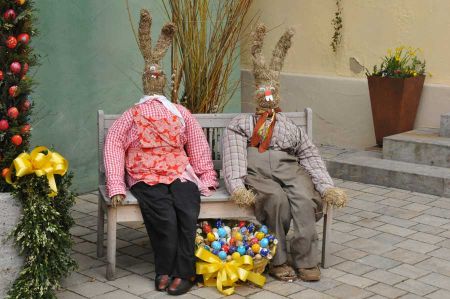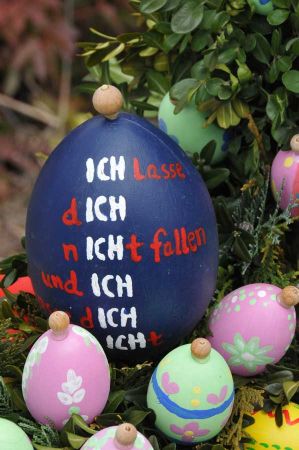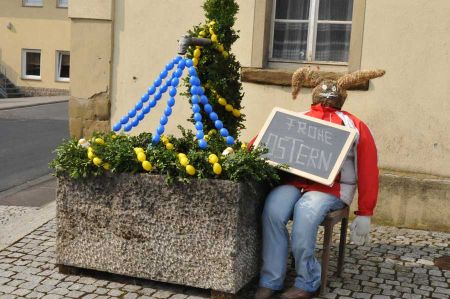Easter and the Easter bunny - mythology about painted eggs
- Written by Portal Editor
Pastor Jean Richier called the Easter bunny hiding the eggs "a fable to be opened to the simple-minded and to children" (fabula, que simplicioribus et infantibus imponunt) and he consequently had to leave his native France in the 17th century for reasons of religious persecution.
Nevertheless, he found a new home in Germany.
Many others including the view of many in cultural studies, saw the reason for the strong upswing that the Easter Bunny belief finally took in the 19th century in the industrial production of cheap beet sugar, which finally made the production of affordable chocolate bunnies and eggs possible.
Linking the rabbit to the egg
 The connection of the Christian Easter with the egg as a symbol is known for various European countries from the Middle Ages at the latest, but may also have been started much earlier. There has also been an older interpretation of the rabbit as a symbol of resurrection since Ambrosius. The diverse Christian rabbit symbolism found expression in many images in the Middle Ages, see the meaning of the rabbit in arts. The connection of the rabbit to Easter egg use is still unclear, even if the fertility of the rabbits has a close connection to spring in itself. The following hypotheses are gladly given in this regard:
The connection of the Christian Easter with the egg as a symbol is known for various European countries from the Middle Ages at the latest, but may also have been started much earlier. There has also been an older interpretation of the rabbit as a symbol of resurrection since Ambrosius. The diverse Christian rabbit symbolism found expression in many images in the Middle Ages, see the meaning of the rabbit in arts. The connection of the rabbit to Easter egg use is still unclear, even if the fertility of the rabbits has a close connection to spring in itself. The following hypotheses are gladly given in this regard:
 Some early painted Easter eggs show the three-rabbit picture - a representation of three rabbits with only three ears in total, in which each rabbit has two ears due to the "double use" of ears; this is a well-known symbol for the Trinity today (however, the original meaning is unclear). Perhaps one idea could have come from this representation of the rabbit as an egg supplier.
Some early painted Easter eggs show the three-rabbit picture - a representation of three rabbits with only three ears in total, in which each rabbit has two ears due to the "double use" of ears; this is a well-known symbol for the Trinity today (however, the original meaning is unclear). Perhaps one idea could have come from this representation of the rabbit as an egg supplier.
At one point in the Bible, Ps 104.18 EU, older translations speak of "hares". The reason for this was the Latin translation of Spr 30.26 EU, in which Hieronymus translated the Hebrew "schafan" (rock hyrax) with "lepusculus" (bunny). Since late antiquity, this place has been interpreted as a symbol for the weak man (hare) who seeks refuge in the rock (Christ). This interpretation probably justified the rabbit symbolism in Christian iconography.
Please read as well:
Easter Bunnies made of tree slices - but why Bunny?
Underwater fortress discovered in the Turkish Van lake
